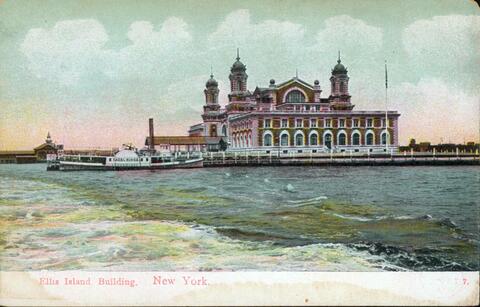
 Immigration in New York State, 1650-1950
Immigration in New York State, 1650-1950
Immigrants built a vibrant, diverse and modern New York State. However, the arrival of European immigrants was also incredibly disruptive. Our history bears those imprints, as well as many more positive outcomes. Immigrants have come to New York for many reasons: to escape persecution, to improve their economic outlook, and to build new lives. This exhibit focuses on historic immigration to New York State from 1650 to 1950. Our story begins with the arrival of Dutch settlers and continues through the end of the World Wars.
This exhibit was curated by David Hochfelder (SUNY University at Albany) and Karen Pastorello (SUNY Tompkins Cortland Community College), with project management and additional contributions from Julia Corrice (Cornell University), Claire Lovell (SCRLC), Ryan Perry (CLRC), Nicole Menchise (LILRC), and Heidi Ziemer (WNYLRC).
This bilingual project conserves, digitizes, and curates* a portion of Cornell’s International Workers Order (IWO) archives and most especially those of its Jewish division, known as the Jewish People’s Fraternal Order (JPFO). The IWO was founded in 1930 as an immigrant fraternal order that provided high-quality, low-cost health and burial insurance and other benefits for members. The origins of the IWO / JPFO arose from a decade of splits (1920-1930) concerning the U.S.S.R., the Bolshevik Revolution and Communism that consumed the Jewish Federation of Socialists and the Arbeter Ring (Workmen’s Circle) groups associated with Eugene V. Debs’ Socialist Party. While the vast majority of the IWO’s members—~200,000 at its peak right after World War II—did not belong to the Communist Party of the United States of America, the IWO’s politics and leadership were largely aligned with those of the Party.